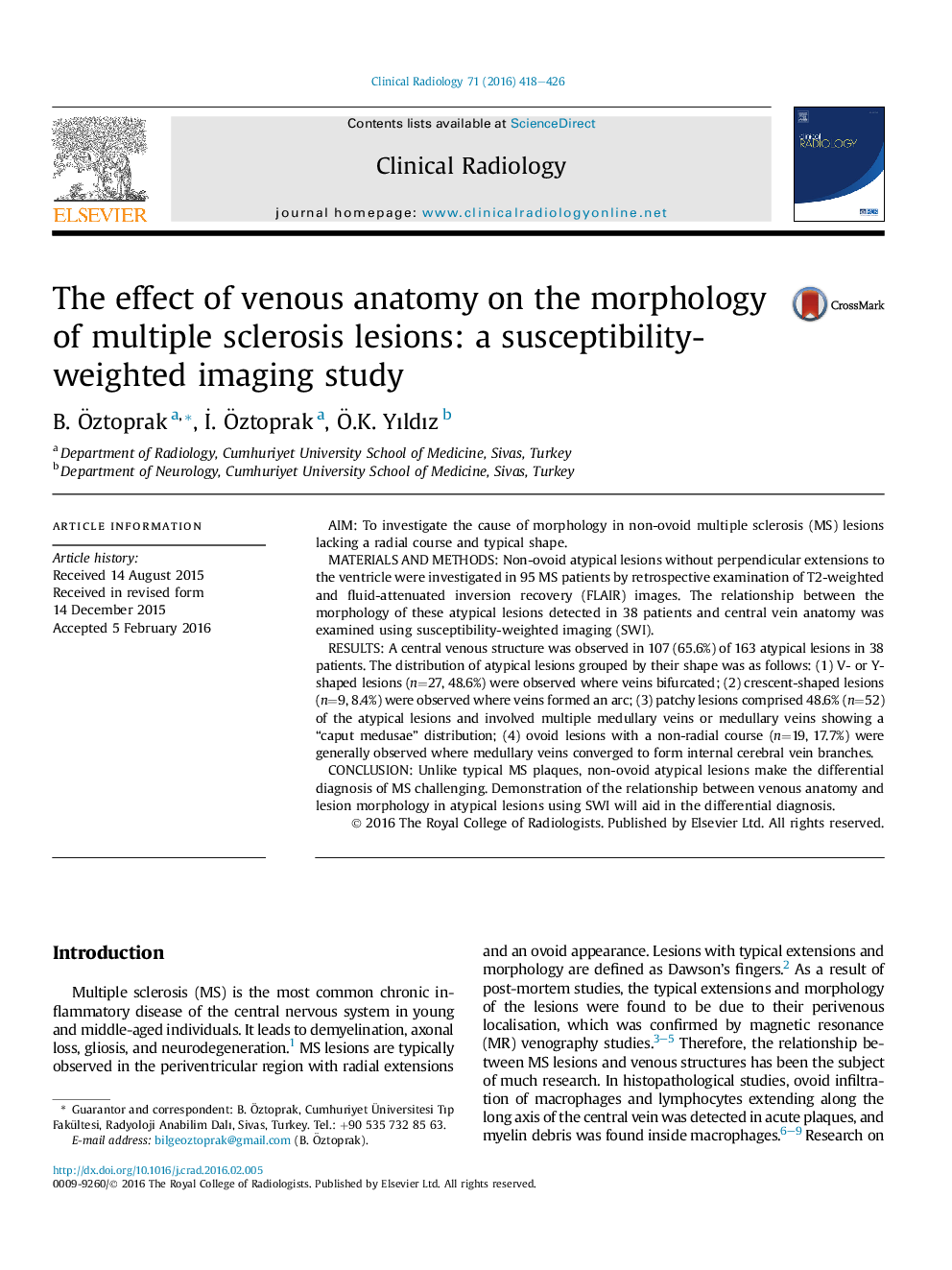| Article ID | Journal | Published Year | Pages | File Type |
|---|---|---|---|---|
| 3981193 | Clinical Radiology | 2016 | 9 Pages |
•Morphology of MS lesions are associated with the orientation of central veins.•SWI shows venous anatomy and anatomic variations in MS lesions.•Association between vein and T2-hyperintensity may aid in differential diagnosis.
AimTo investigate the cause of morphology in non-ovoid multiple sclerosis (MS) lesions lacking a radial course and typical shape.Materials and methodsNon-ovoid atypical lesions without perpendicular extensions to the ventricle were investigated in 95 MS patients by retrospective examination of T2-weighted and fluid-attenuated inversion recovery (FLAIR) images. The relationship between the morphology of these atypical lesions detected in 38 patients and central vein anatomy was examined using susceptibility-weighted imaging (SWI).ResultsA central venous structure was observed in 107 (65.6%) of 163 atypical lesions in 38 patients. The distribution of atypical lesions grouped by their shape was as follows: (1) V- or Y-shaped lesions (n=27, 48.6%) were observed where veins bifurcated; (2) crescent-shaped lesions (n=9, 8.4%) were observed where veins formed an arc; (3) patchy lesions comprised 48.6% (n=52) of the atypical lesions and involved multiple medullary veins or medullary veins showing a “caput medusae” distribution; (4) ovoid lesions with a non-radial course (n=19, 17.7%) were generally observed where medullary veins converged to form internal cerebral vein branches.ConclusionUnlike typical MS plaques, non-ovoid atypical lesions make the differential diagnosis of MS challenging. Demonstration of the relationship between venous anatomy and lesion morphology in atypical lesions using SWI will aid in the differential diagnosis.
